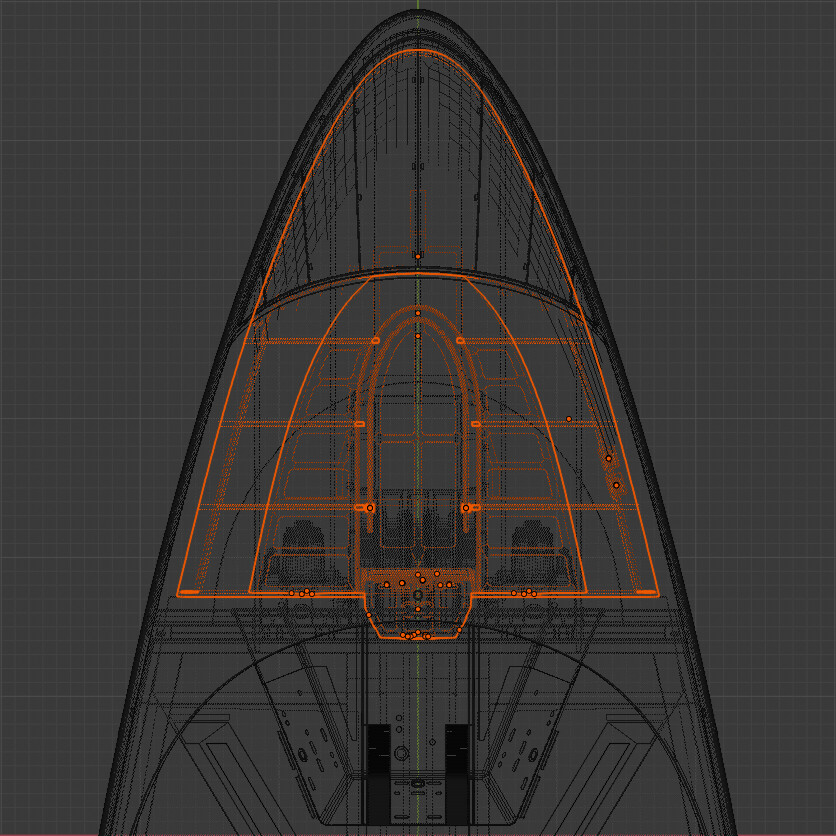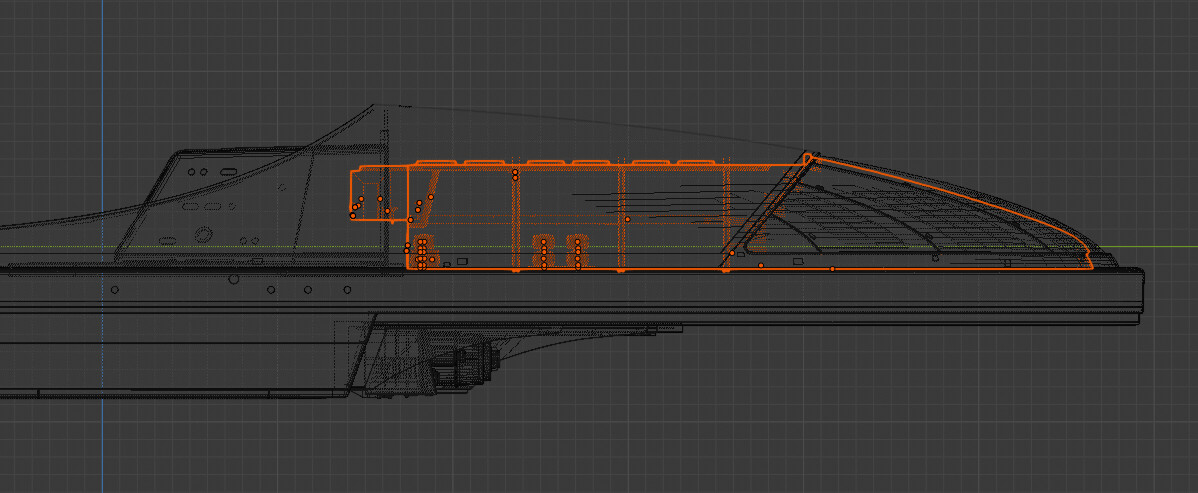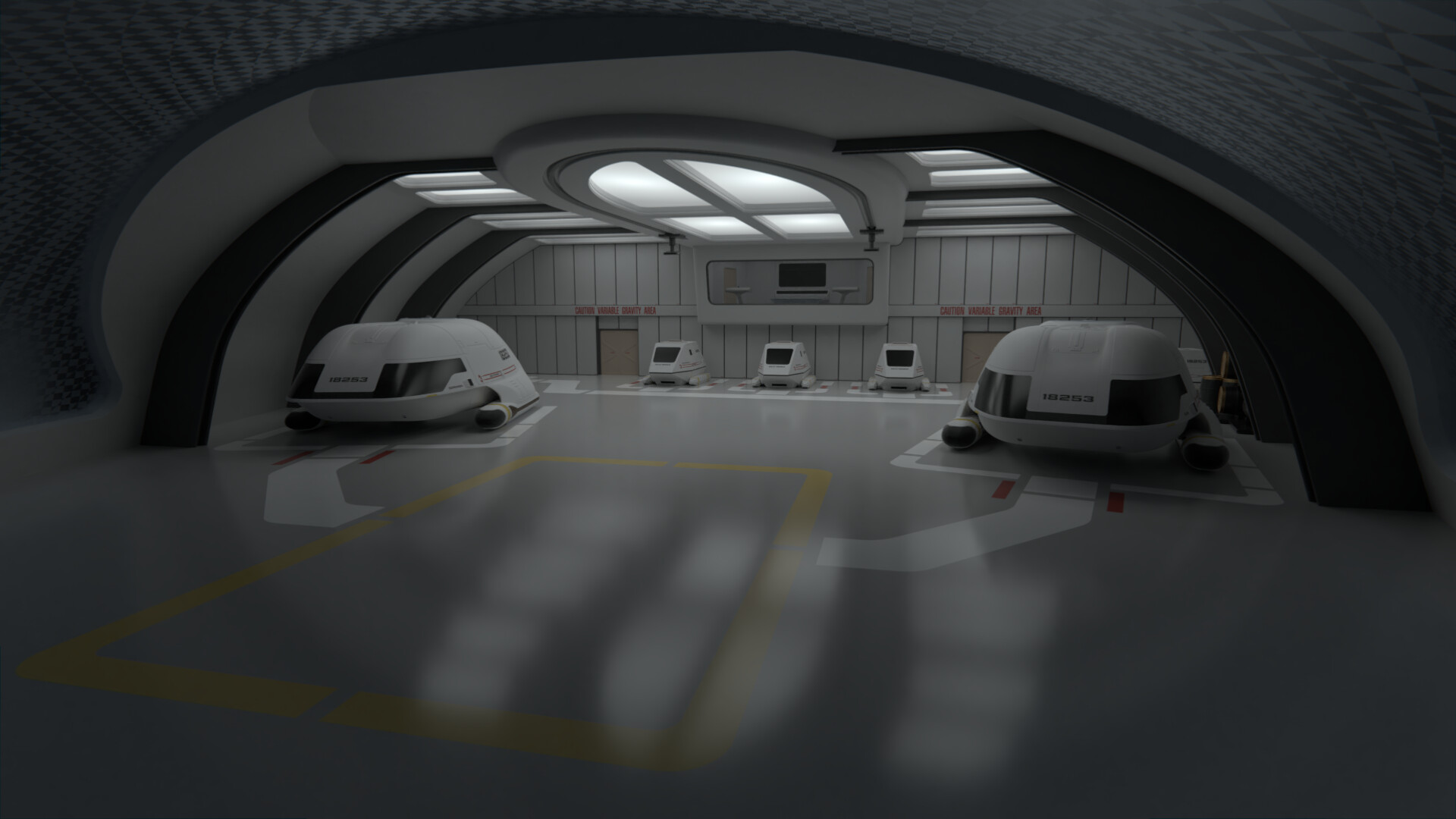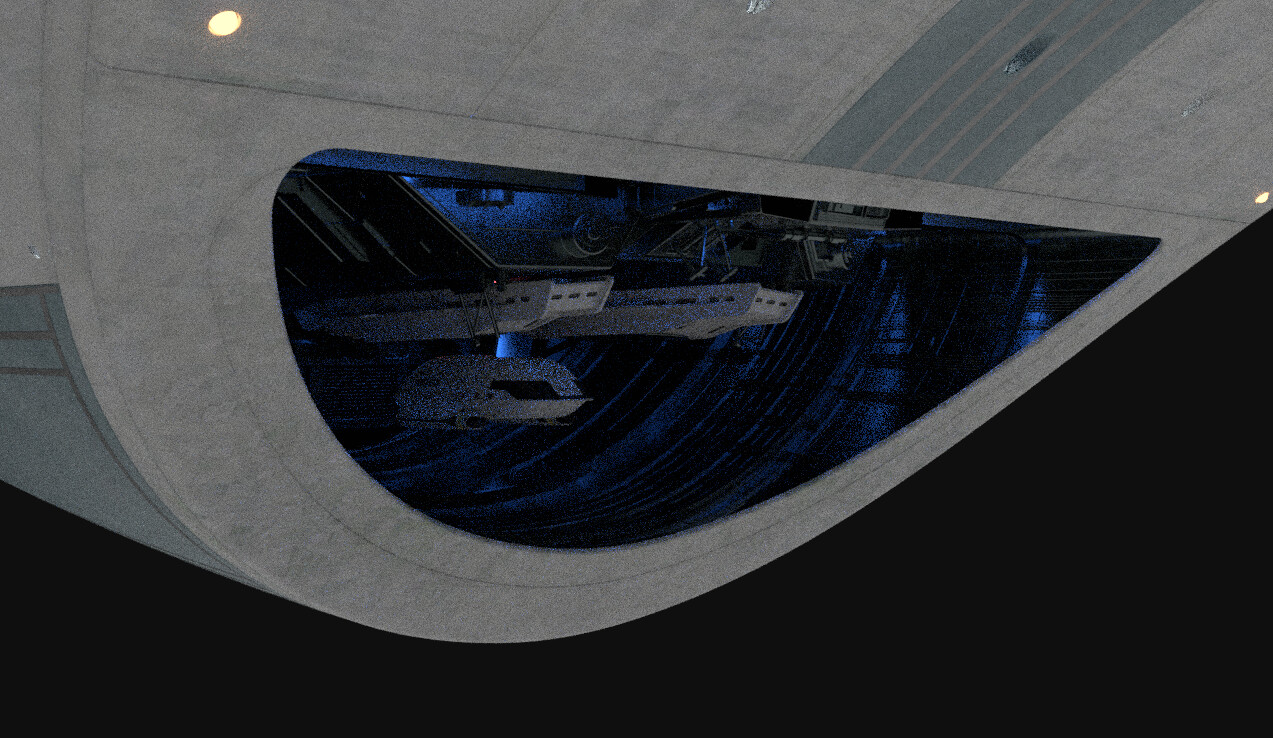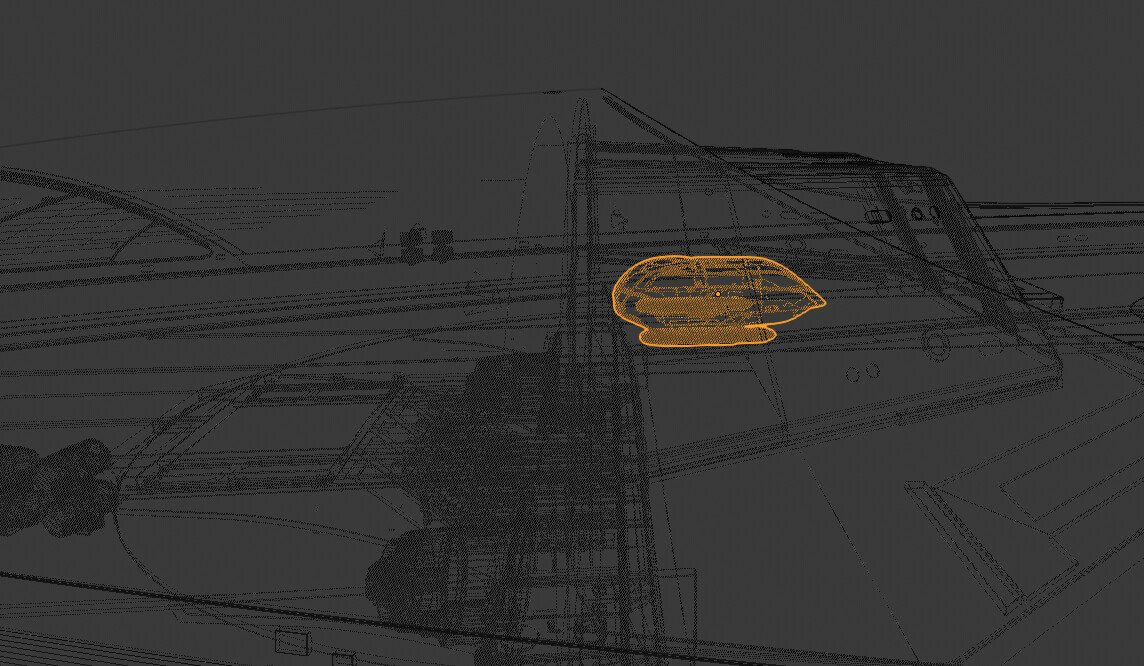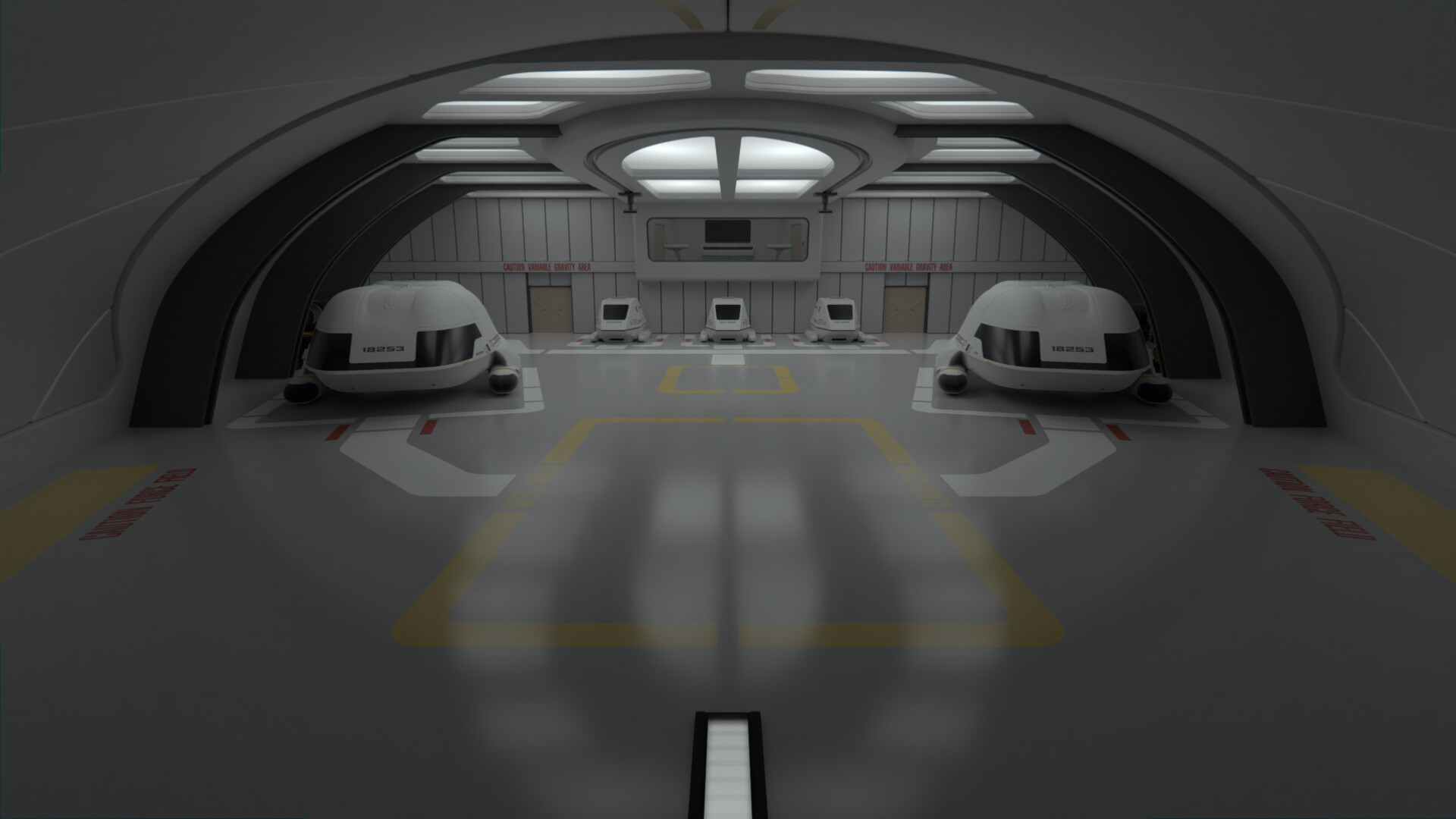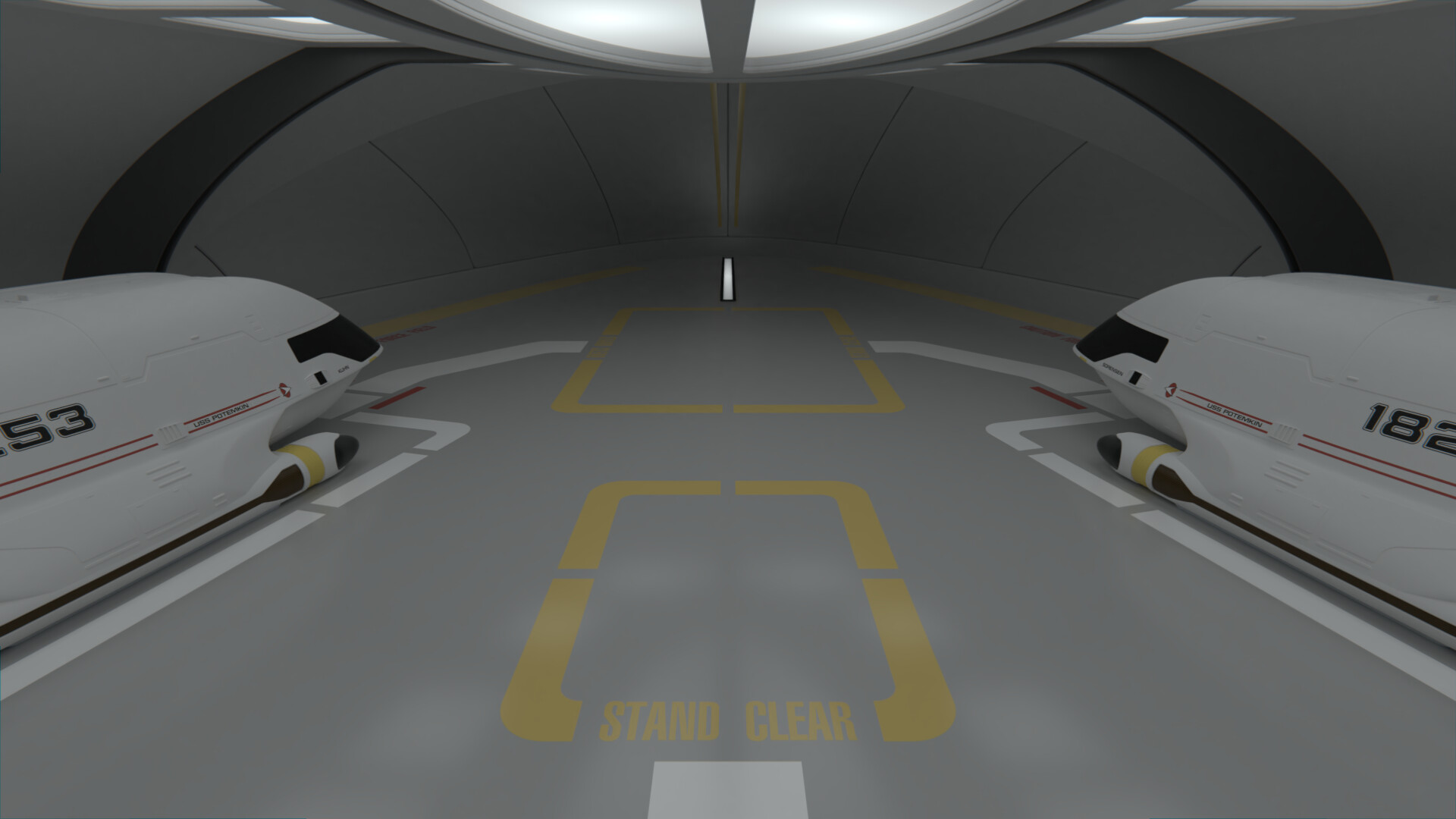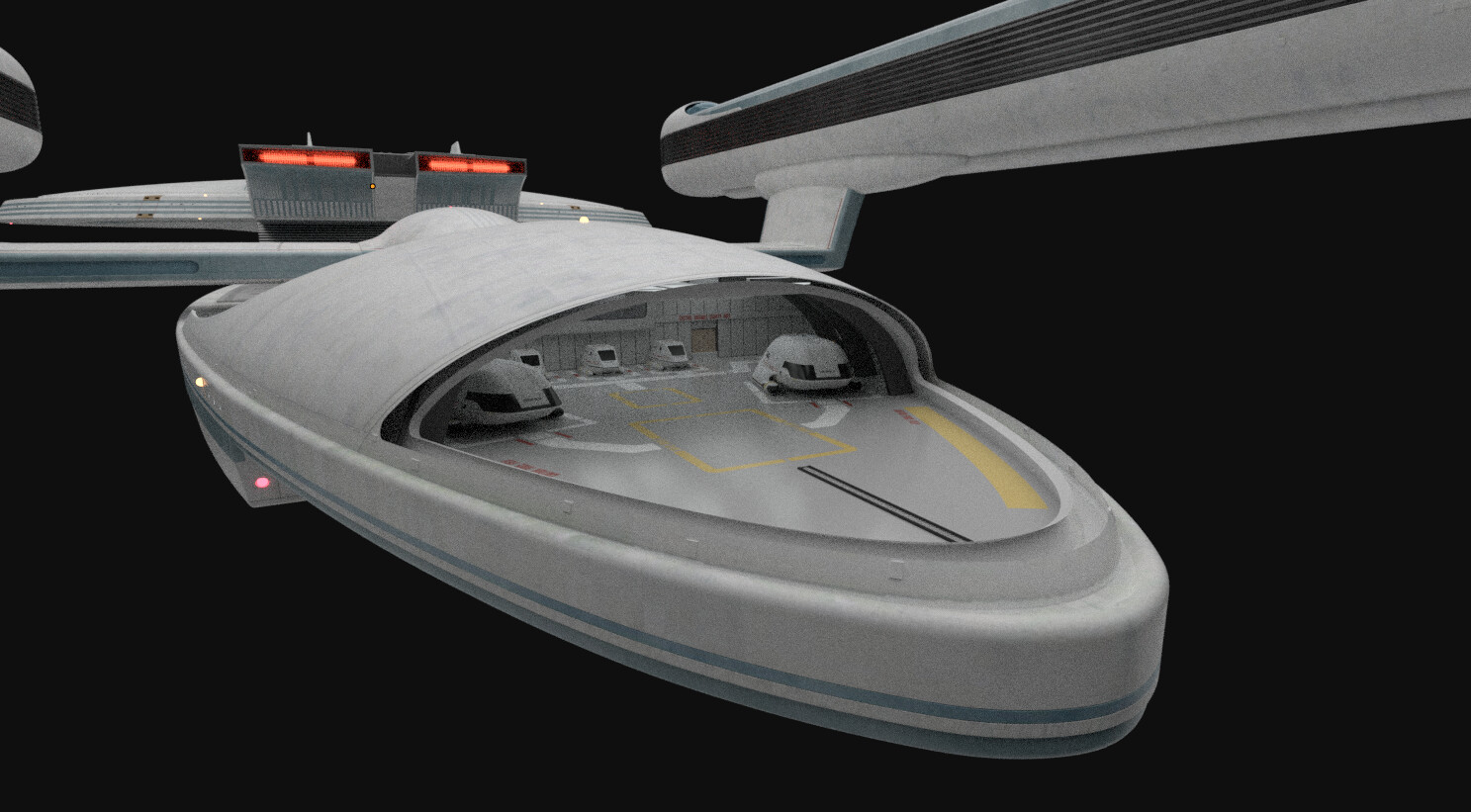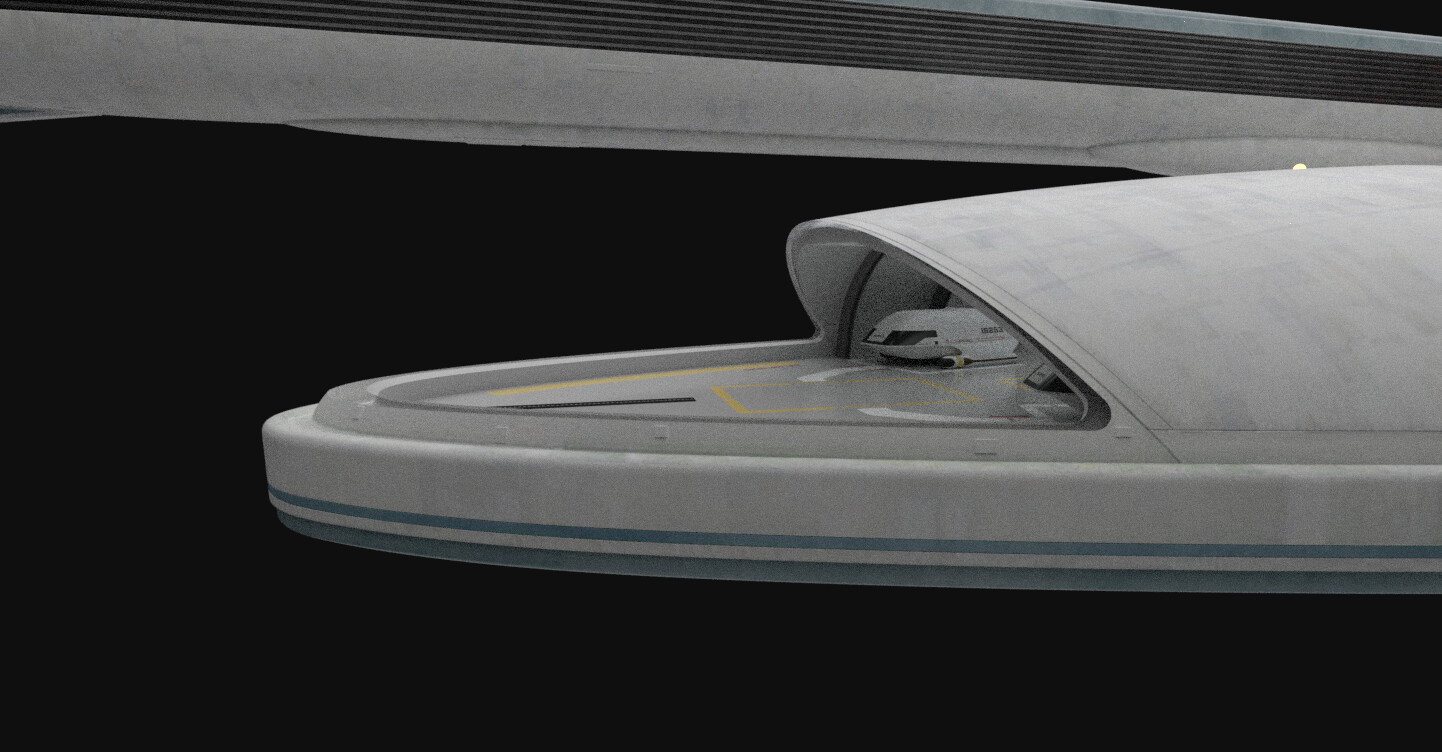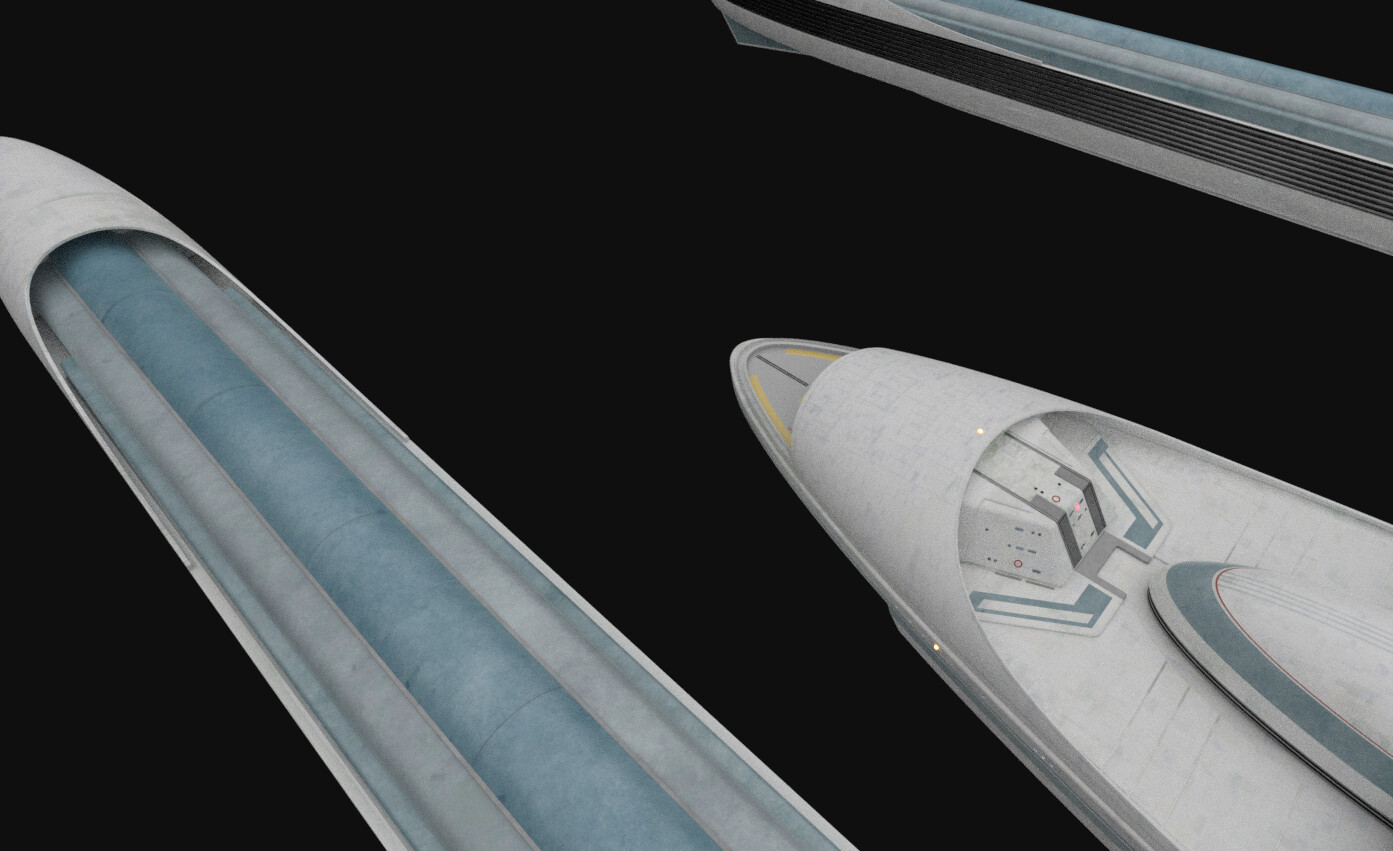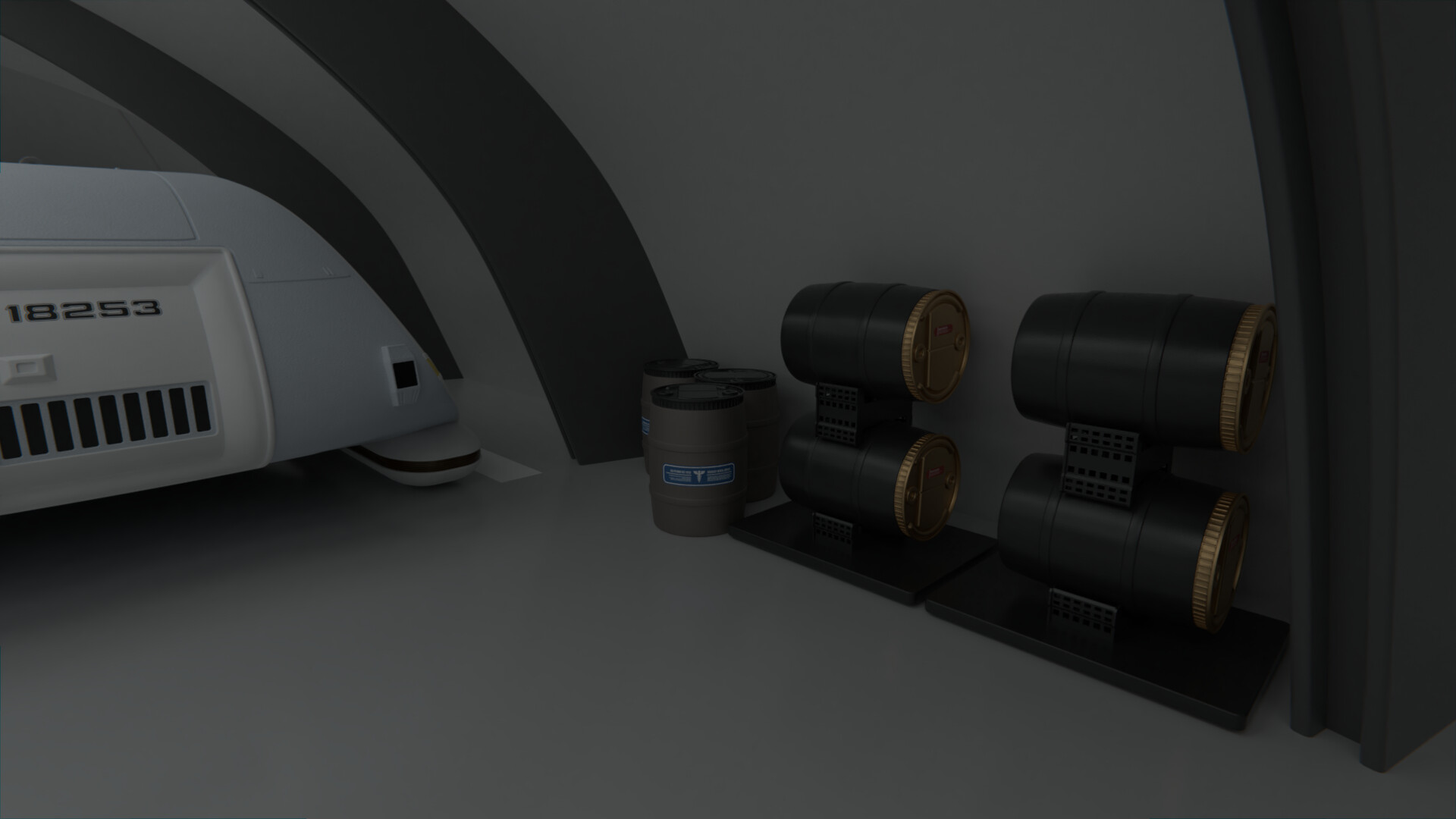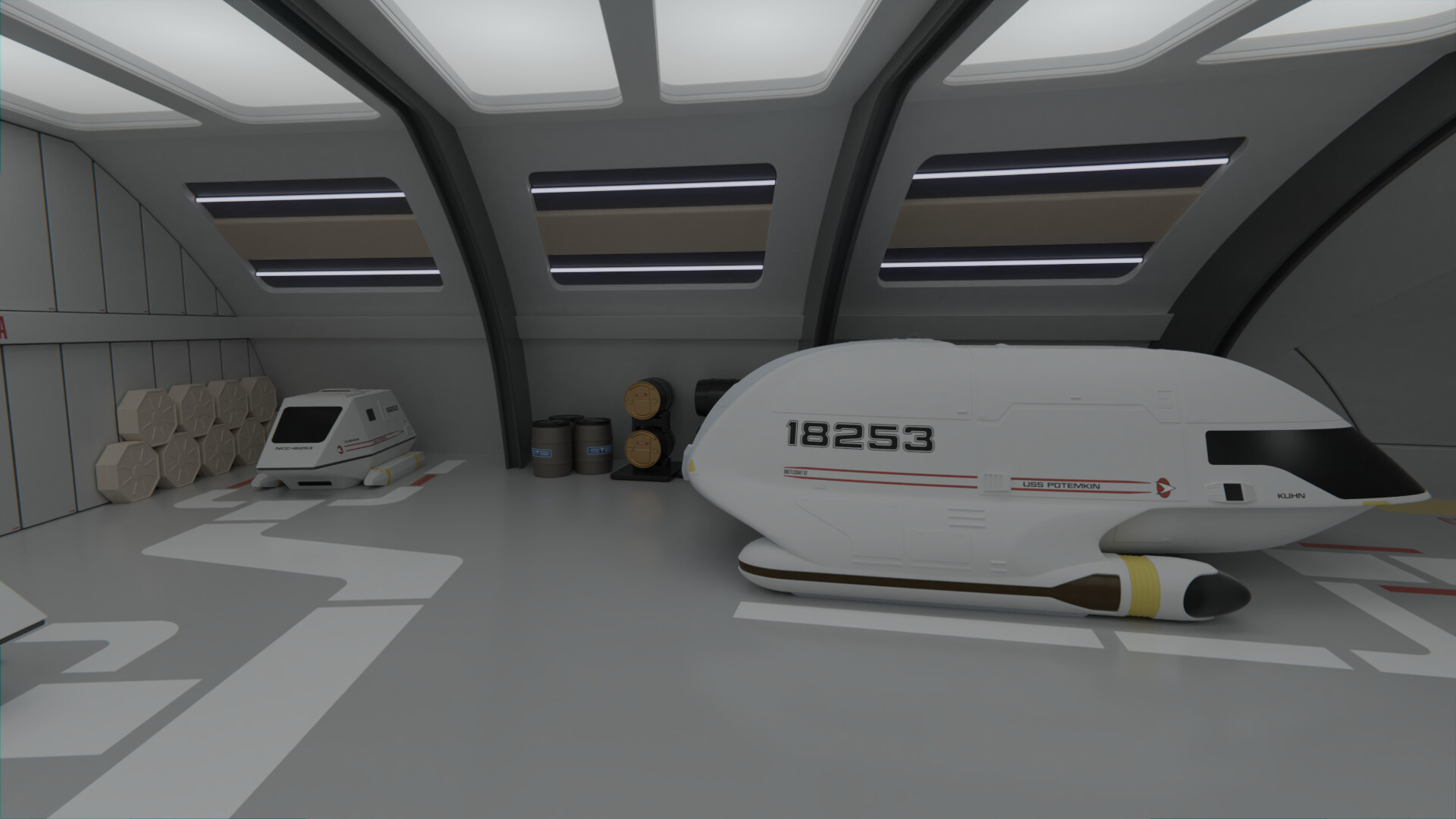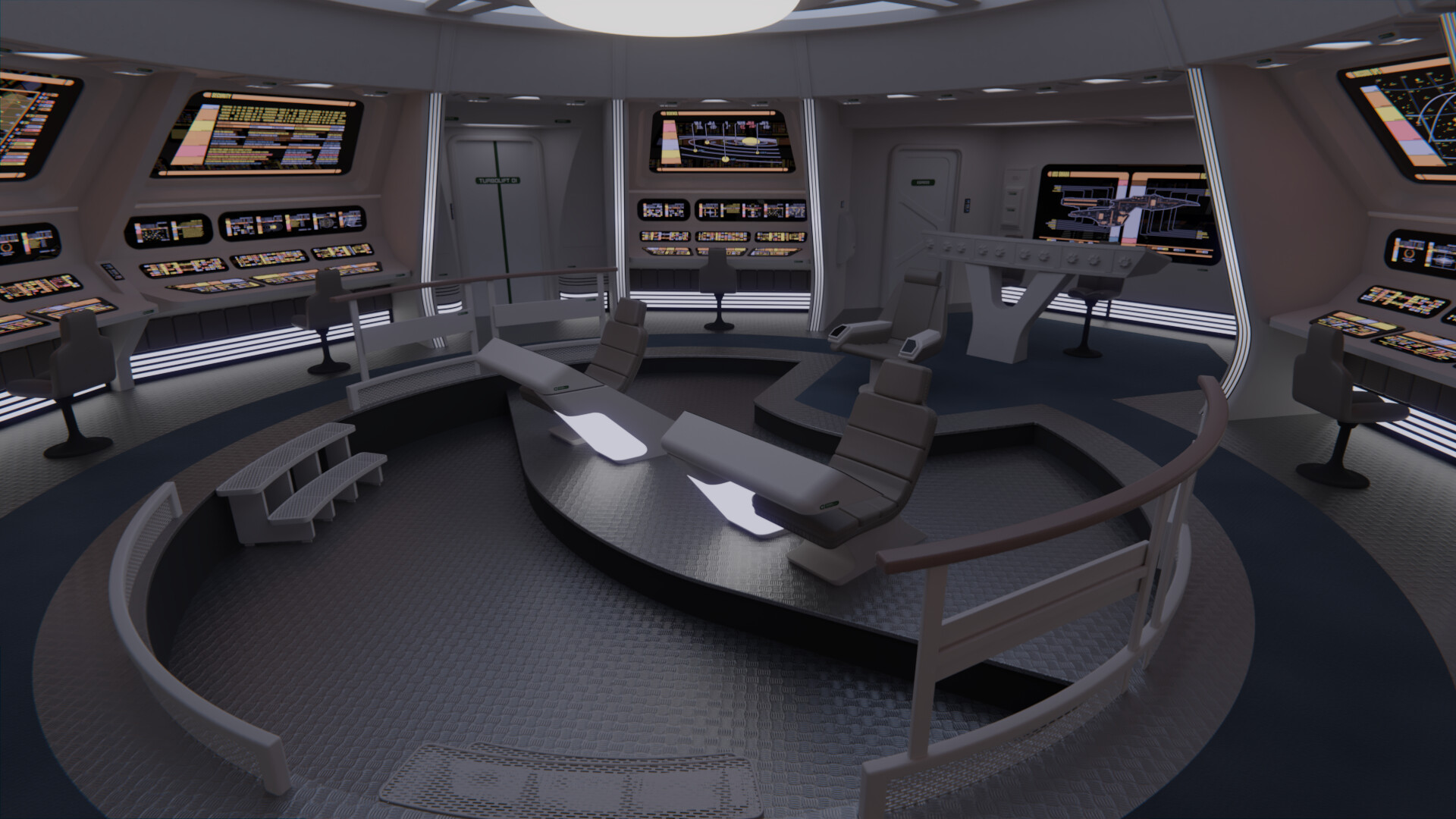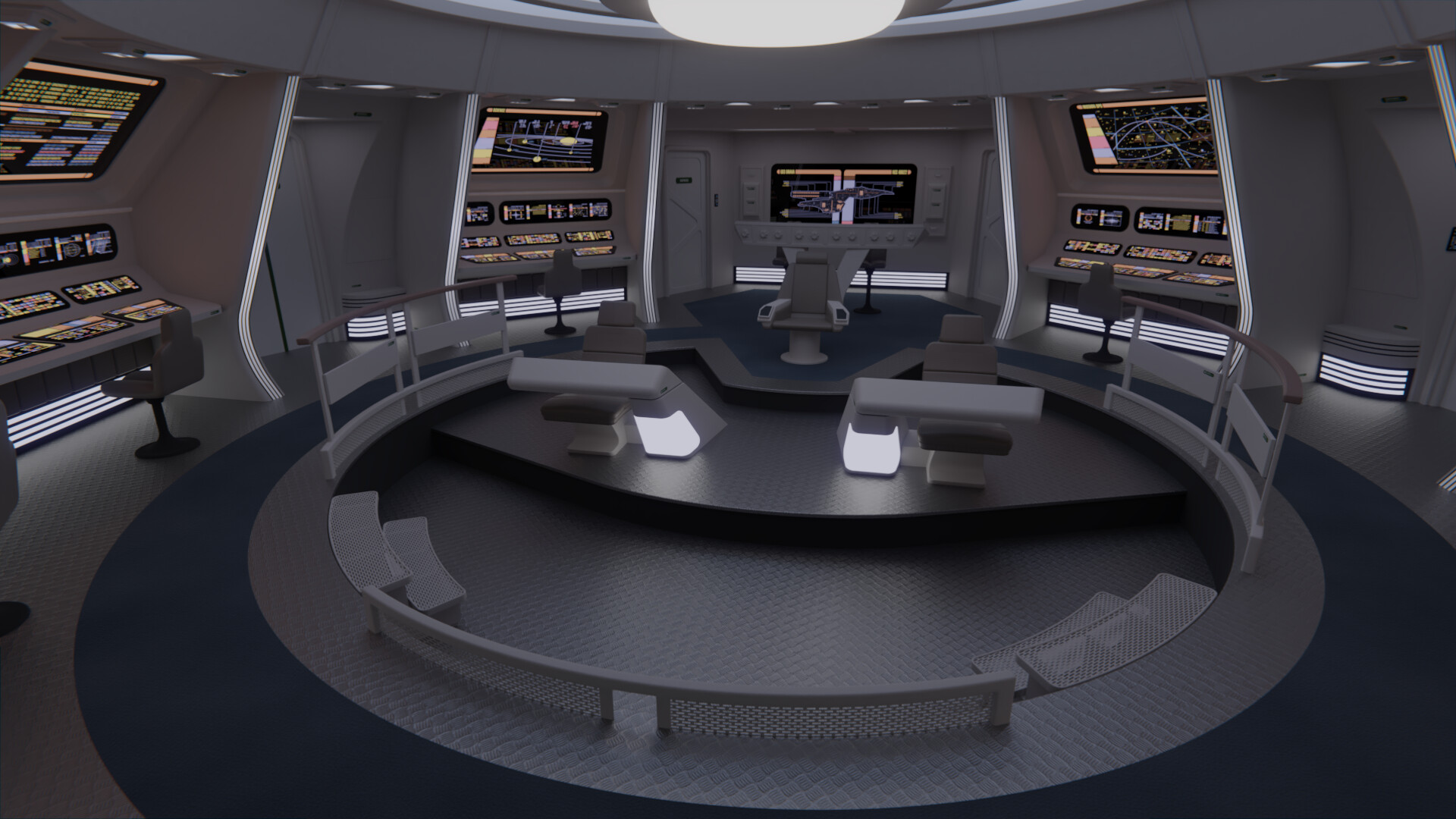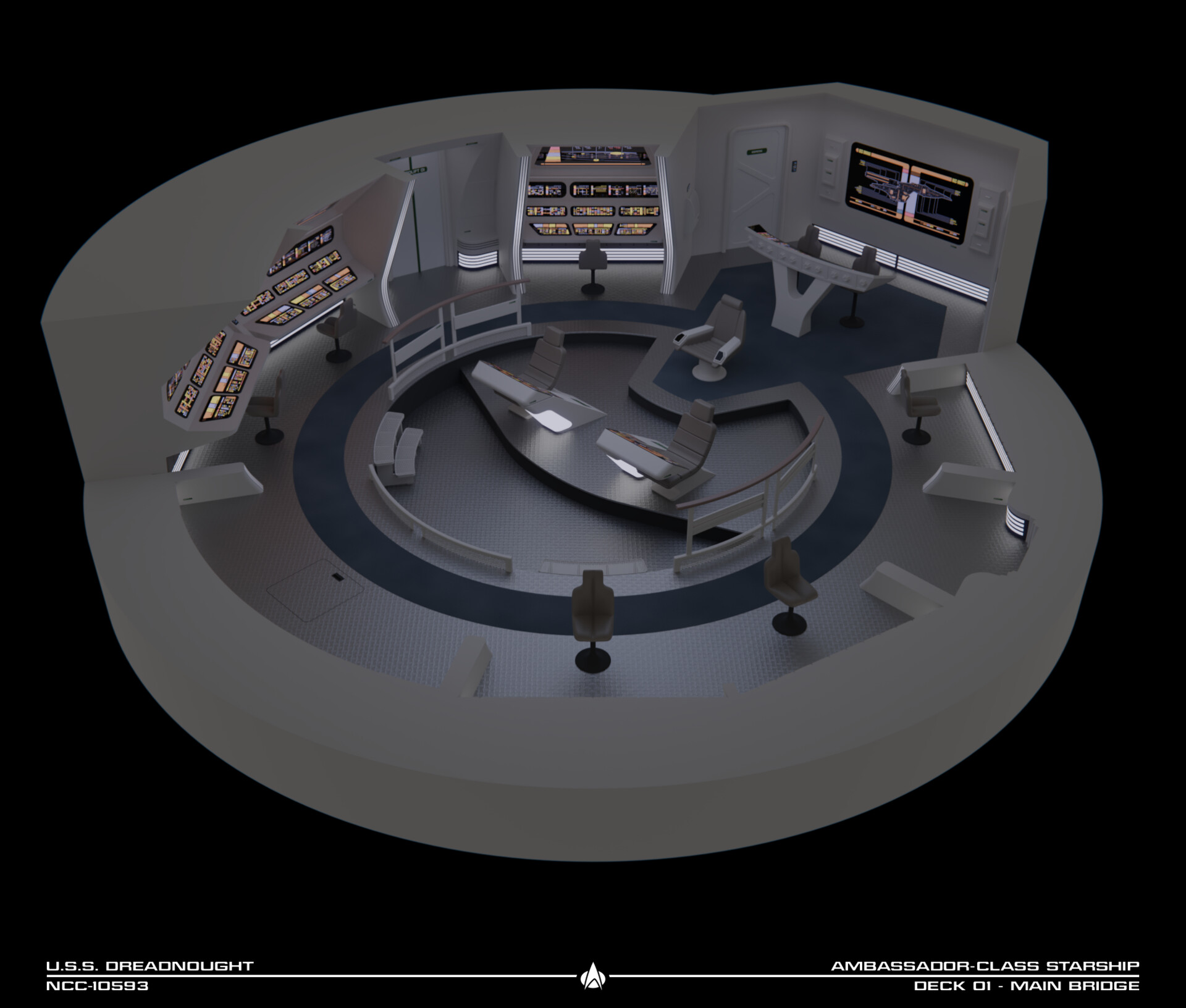@The Librarian: Yeah, as mentioned in post #1633 there unfortunately just no space below or behind the shuttlebay for that. As
@cardinal biggles's point out the space just ends up being unusable for that purpose once you factor in the outer hull thickness and the space between decks.
The Type-15 shuttlepod does enter but there's less than a meter left of clearance, and no shuttlecraft would fit in there, not even the older TMP era ones; those are just as tall as the Type-7. Only the Defiant's Type-10 and Type-18 would fit.
My alternative for shuttle maintenance is that that's located at the very bottom of the ship, inside the empty area behind the deflector dish. The area is kept at 0g and shuttles are taken there externally; if they can via their own power, if not using the ship's tractor beams to move them from the shuttlebay to shuttle maintenance. This would somewhat explain the lack of doors there, it's not meant to be continually used, just to repair massive damage to shuttlecrafts. Day to day maintenance is done on the main shuttlebay deck.
@The Primeval: Yeah, but as much nostalgia as I have for the USS Dallas, its levels were designed with 0 considerations as to the internal layout of the Excelsior. The shuttlebay there is a simple boxed room with a vertical door, and two identical rooms at each side for shuttle storage. Similarly, deck 1, which should only feature the bridge and perhaps a few rooms, has an entire corridor system, crew quarters with huge windows, and even a transporter room.
I've finished the front wall of the shuttlebay, adding in panels and recessing the access doors somewhat, all similar to details from TNG. I moved the central line with the "VARIABLE GRAVITY AREA" text upwards a bit, to make the panels above and below it the same height. This meant that the extruded line on the sides of the shuttlebay was removed. I'm unsure at this stage if I'll redo that detail or do something completely different for those walls.
I added a 5th shuttlepod, as it easily fitted between the central two; and rotated the outermost Type-15s 90ª so that they're facing away from the side walls now. This gives them a bit more clearance to get in and out with the tractor beam.
I've also started working on the floor. Still more lines and text to add there (not to mention texture), but it's taking shape. The red markings indicate where a shuttle's access is, so Type-15s have them at the sides, while Type-7s have them at the front. Shuttles ready to launch are taxied to the central yellow area via tractor beam; while the reverse happens for arriving shuttles.
Finally, as you can see I've added the textures back to the Type-15s. I decided to name them all after Argentine space scientists, so excuse me while I list them all, I bet you never heard of them.

Shuttlepod 01 is named after Jorge Sahade (1915-2012), an astronomer who specialized in binary star systems and lay much of the groundwork for their modern understanding. He also served as president of the International Astronomical Union.
Shuttlepod 02 is named after Pedro Zadunaisky (1917-2009), an astronomer and mathematician who was a pioneer in celestial mechanics. While working at NASA's Goddard Space Center he was responsible for calculating the orbit of Explorer 1 and other early US satellites. He was also the first to calculate the orbit of Saturn's moon Phoebe, and of Halley's Comet, among many other bodies.
Shuttlepod 03 is named after Adela Ringuelet (1930), an astrophysicist who specializes in stellar spectroscopy. She founded the Argentinian Astronomical Association, and is a member of the IAU's 'Stars and Stellar Physics' division. She's also the widow of Jorge Sahade.
Shuttlepod 04 is named after Carlos Varsavsky (1933-1983), an astrophysicist who founded the Argentine Institute of Radio Astronomy, and oversaw the construction of the Southern Hemisphere's largest radio telescope.
Shuttlepod 05 is named after Gloria Dubner (1950), an astrophysicist who specialized in supernovas. A leading member of the IAU, in 2015 she lead a collaboration between 5 observatories (from NASA, the ESA and the NRAO) to better image the Crab Nebula supernova remnant.


